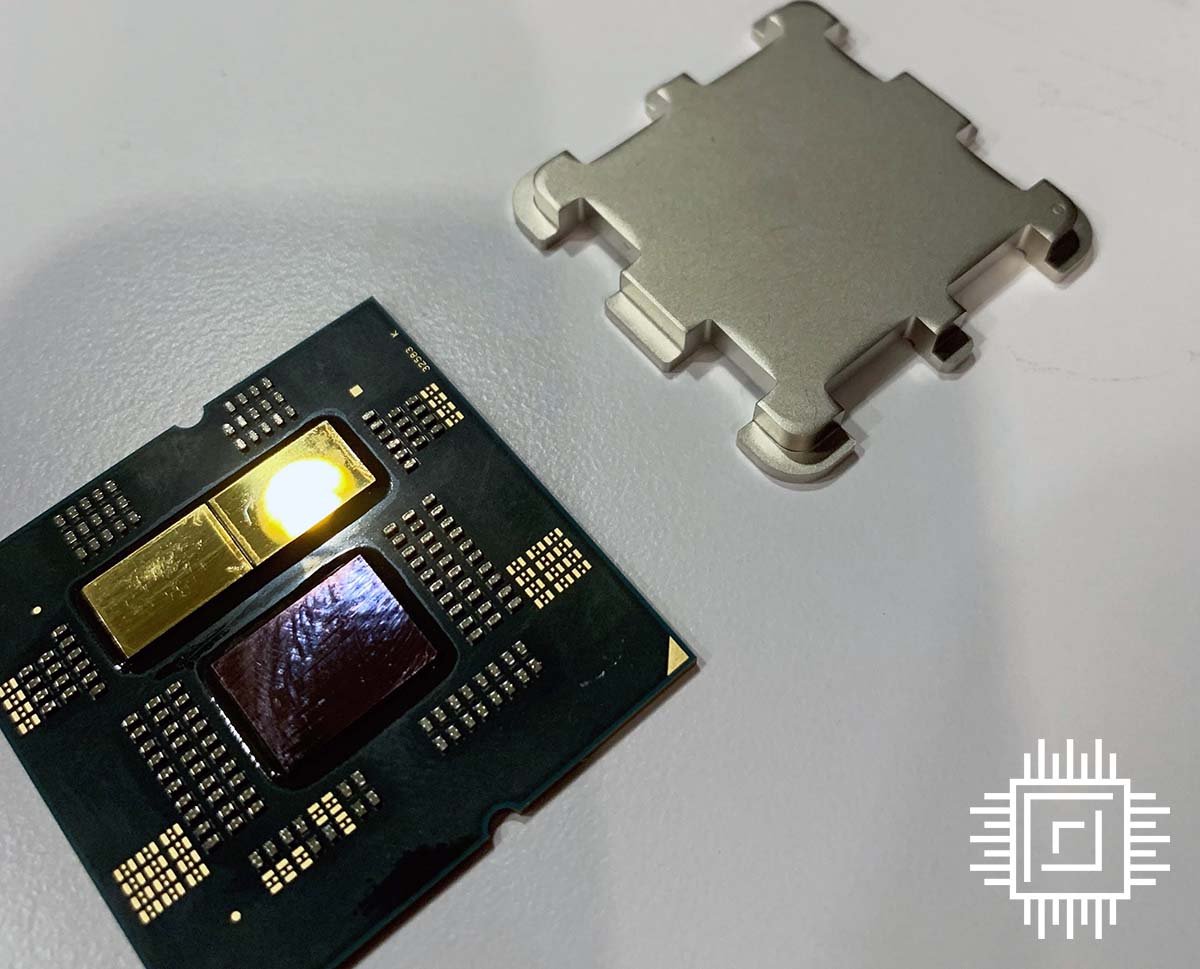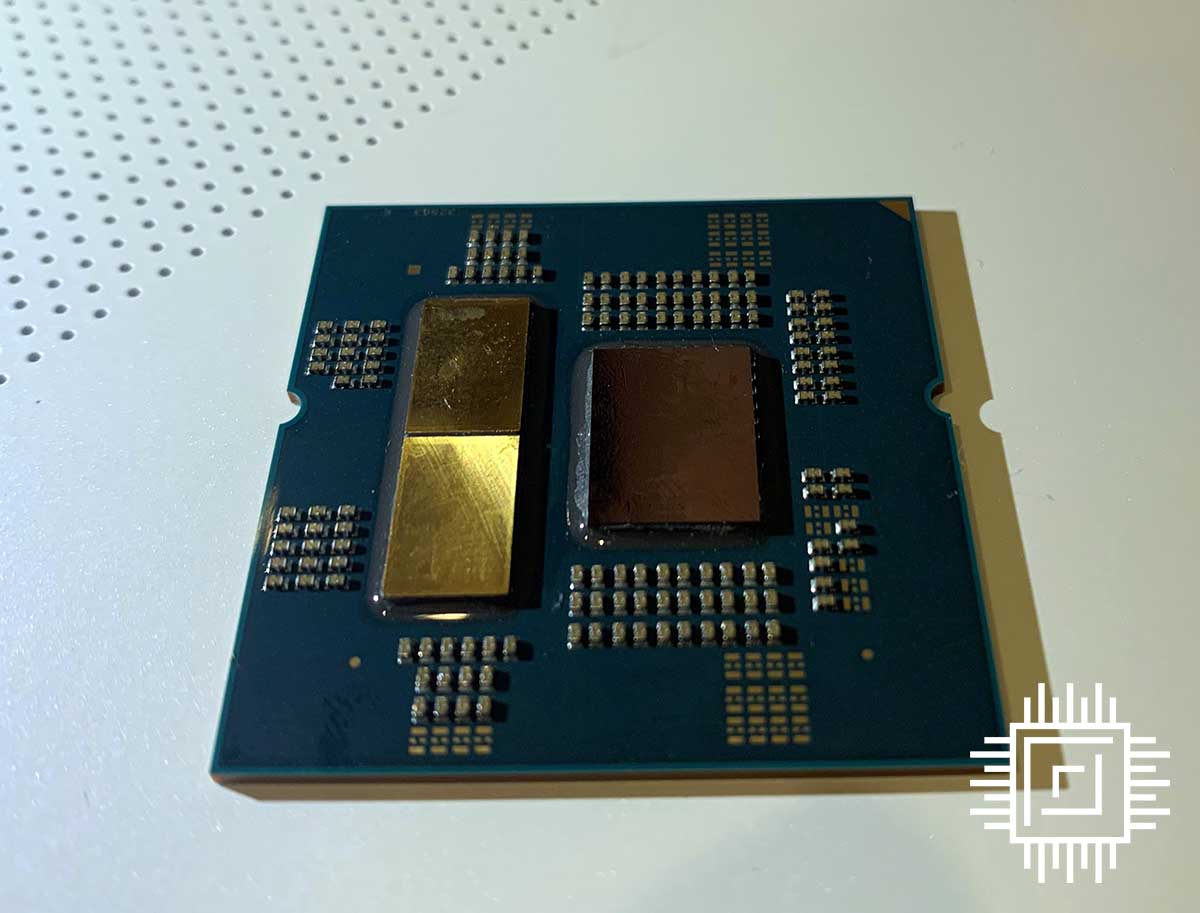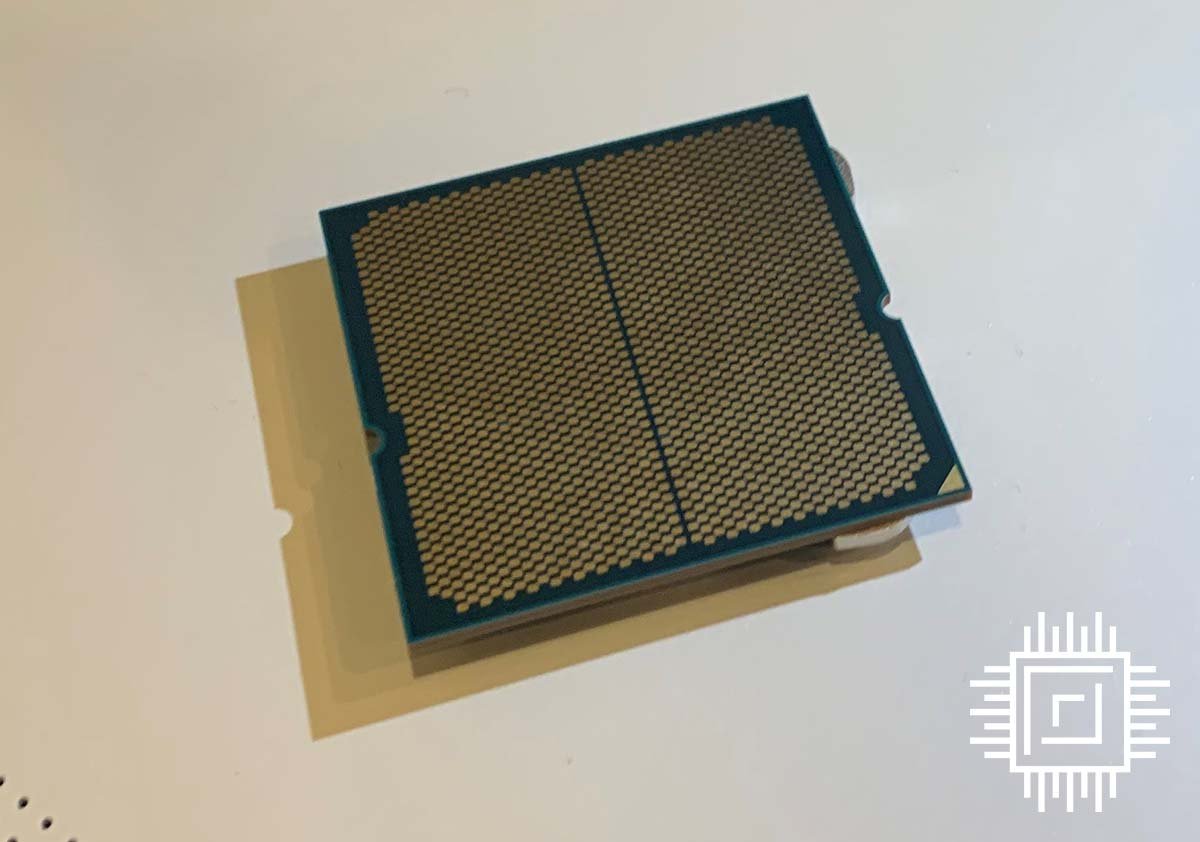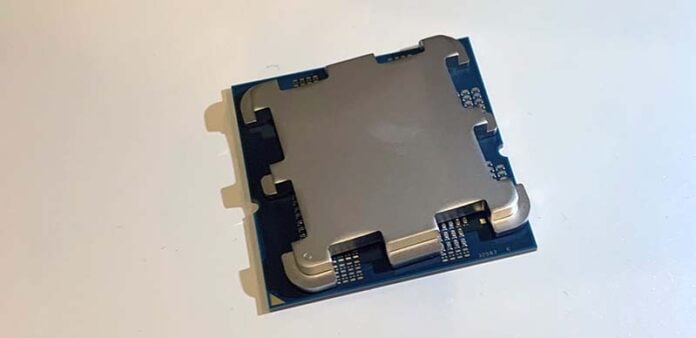Launching September 27, AMD provided the clearest guidance yet of Ryzen 7000 Series performance during a recent event in Austin, Texas. The Zen 4 architecture is wrapped in a new processor package whose socket is known as AM5. Though proportionally the same as incumbent AM4, a lot has changed in the transition to a new platform. At the event, we took a closer look at a mechanical Ryzen 7000 Series CPU sample.

And here is a three-chip Ryzen 7000 Series CPU with the striking heatspreader taken off. The unusual design, referred to affectionately as the ‘octopus,’ has eight cutouts necessary for top-side surface-mount devices (SMD).
You see six SMDs grouped alongside the edges of the substrate. They are a collection of capacitors and resistors that govern the electrical conduit between pins and silicon. AM4, on the other hand, hides its SMDs within the confines of the heatspreader. There is no room to do so this time around.
As you may know, AMD keeps to the same 40mm x 40mm CPU footprint as its direct predecessor but increases pin and overall complexity by moving from a PGA1334 to LGA1718 form factor. AMD says it does this to enable more power and signalling to be fed to AM5 processors which will remain in service until at least 2026.
Having been hands-on with it, the heatspreader element is weightier than we first imagined, and the whole package looks certain to be heftier than AM4 parts.
One downside of this approach, where SMDs are deliberately visible on the upper side, is possible short-circuit faults arising from using conductive heatspreader material between chip and cooler. We’re looking at you, liquid metal. And what a pain it will be to clean off regular thermal interface material when changing processors – those pesky cutouts are perfect hiding places for tiny amounts of paste.
It wouldn’t surprise us in the slightest if enterprising cooling companies released IHS-height shims that covered SMDs and gave the entire socket a cleaner look.

A closer look at a chip shows two eight-core, 16-thread CCDs on the left and the IOD die in the middle, built on 5nm and 6nm processes, respectively. Ryzen 5000 Series, meanwhile, implements 7nm and 12nm production for the same technologies.
Even though it is fabricated on a much smaller process than the present generation, the IOD looks huge in comparison to CCDs, and the main reason for that is the inclusion of stripped-down graphics injected directly into IOD silicon.
Using a space- and power-optimised variant of the graphics present in Ryzen 6000 Series Mobile, equipped here with two Compute Units, AMD wants to expand the reach of Ryzen 7000 Series desktop CPUs to business environments where provision for basic IGPs is critical. Rival Intel has been exploiting this rich sales opportunity for many years. AMD wants in on the action.

Turning it over, we spy the LGA1718 form factor. Moving over to LGA brings commonality for mainstream client, workstation and server stacks, as the latter duo has been using LGA from the get-go. No more bending of CPU pins!


